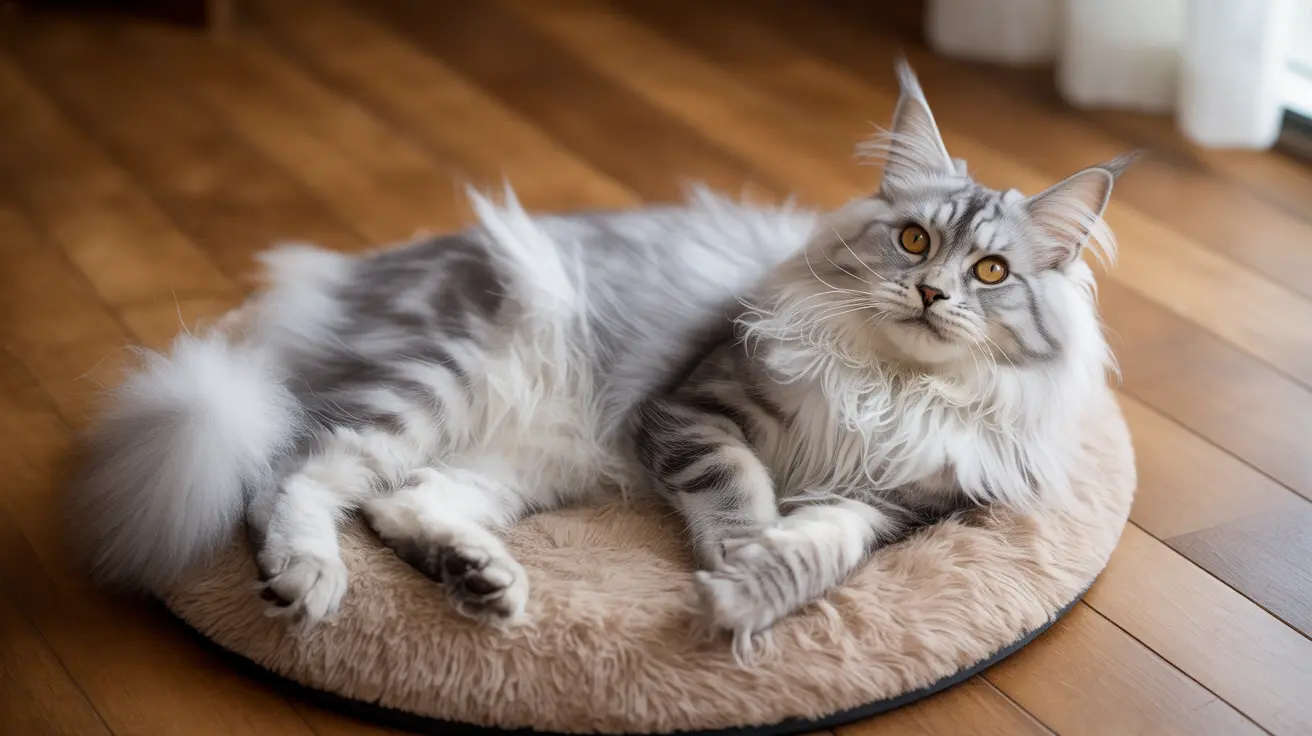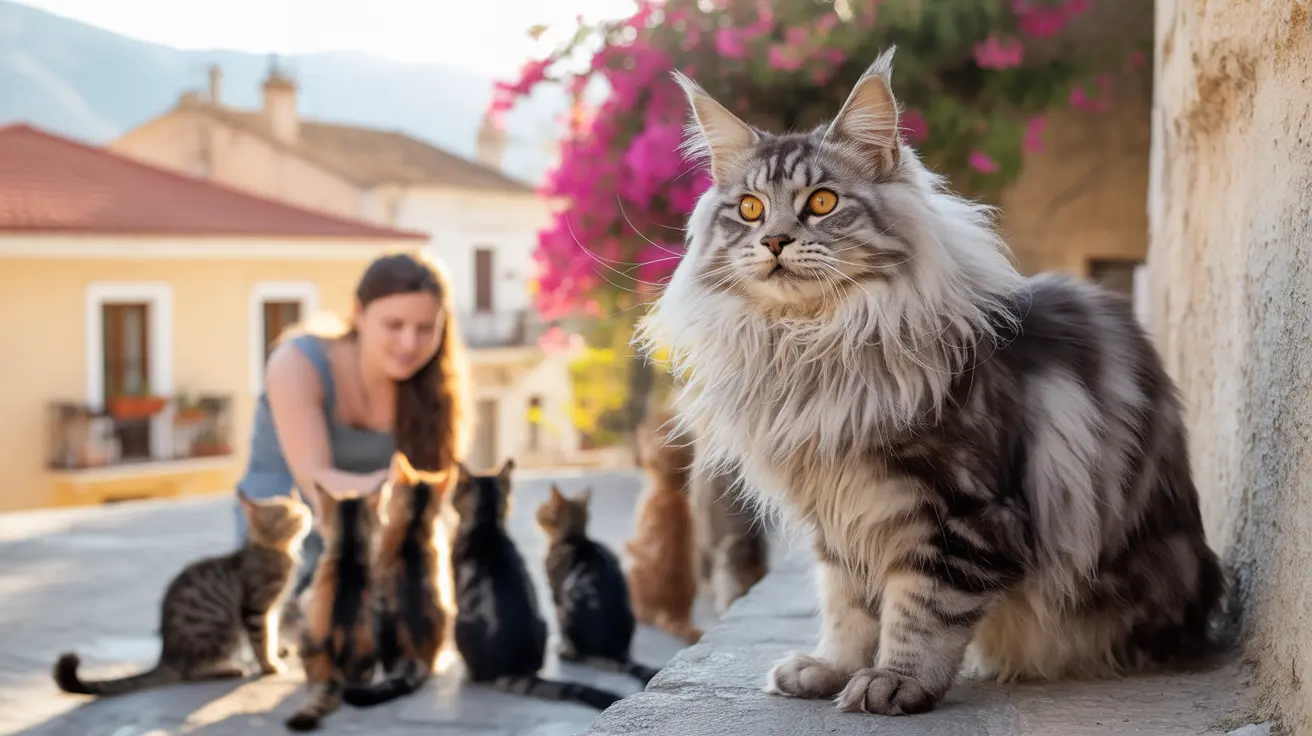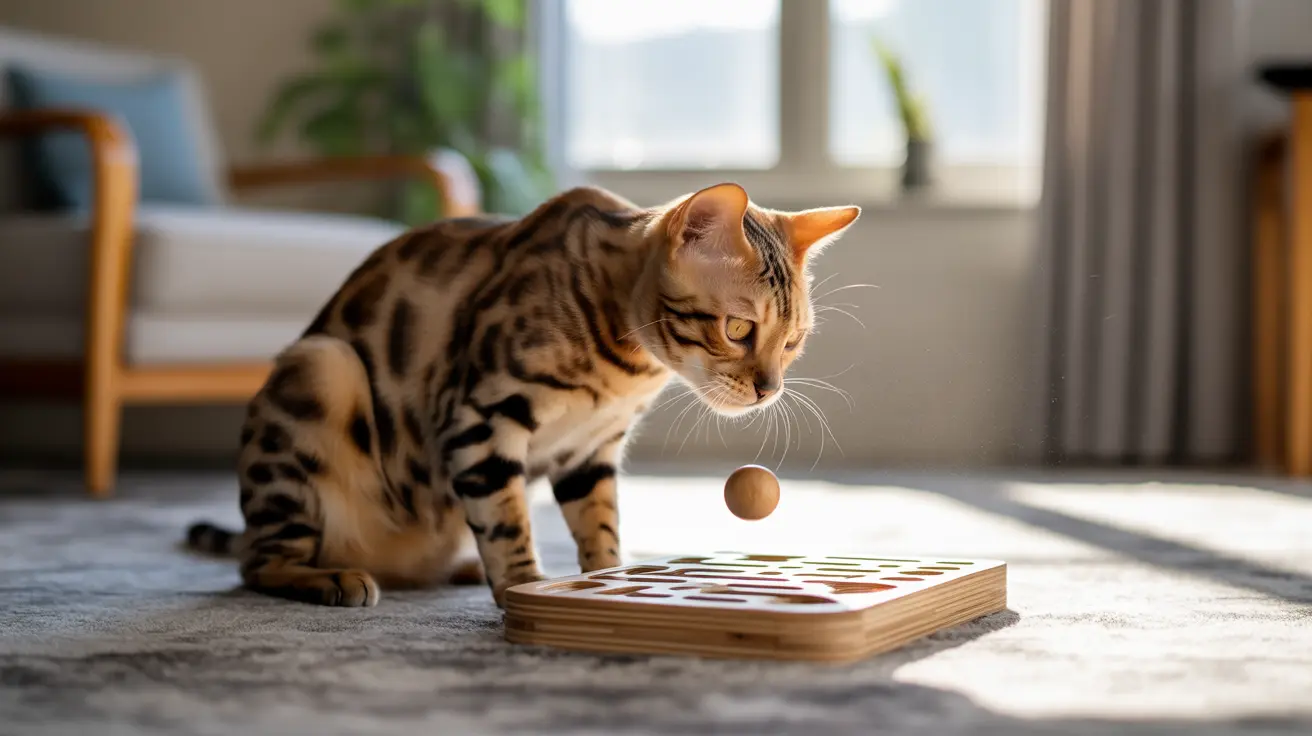Stress-Free Cat Grooming Tips: A Complete Guide to Keeping Your Feline Happy and Healthy
Grooming your cat doesn't have to be a battle of wills. While cats are naturally meticulous self-groomers who spend 30 to 50 percent of their day cleaning themselves, they still need your help to maintain optimal health and comfort. Regular grooming sessions not only keep your feline friend looking their best but also strengthen the bond between you and your pet while allowing you to monitor their overall health.
Whether you're a new cat owner struggling with a reluctant feline or an experienced pet parent looking to refine your technique, implementing stress-free cat grooming tips can transform this necessary routine into an enjoyable bonding experience. The key lies in understanding your cat's needs, using proper techniques, and maintaining patience throughout the process.
In this comprehensive guide, we'll explore proven strategies to make grooming a positive experience for both you and your cat, covering everything from choosing the right tools to recognizing health issues during your grooming sessions.
Understanding Your Cat's Grooming Needs
Every cat has unique grooming requirements based on their coat type, age, and activity level. Cats naturally molt year-round to varying degrees, making regular grooming essential regardless of hair length. Short-haired cats typically need brushing every 1 to 2 weeks, while medium-haired cats often require weekly sessions, and long-haired breeds need daily attention to prevent matting and tangling.
The benefits of regular grooming extend far beyond appearance. Brushing removes loose hair, dead skin flakes, dust, and allergens while stimulating healthy blood circulation that nourishes the skin and supports a shiny coat. It also helps regulate your cat's body temperature, keeps their coat waterproof, spreads natural oils throughout their fur, and most importantly, reduces the formation of hairballs by removing loose fur before your cat can swallow it.
Building Tolerance: Starting Your Grooming Journey
The foundation of successful grooming lies in building your cat's tolerance gradually, especially with new kittens or adults who haven't experienced regular grooming. Start grooming early in kittenhood whenever possible, as young cats adapt more easily to handling and grooming tools.
For adult cats new to grooming, begin with short, positive sessions that focus on building trust rather than completing a full grooming routine. Let your cat sniff and investigate grooming tools before using them, and always reward calm behavior with treats and praise. This positive reinforcement approach helps create pleasant associations with grooming time.
Never force grooming sessions or continue when your cat shows signs of stress such as twitching skin, tail swishing, or growling. Instead, stop the session and try again later, gradually building up the duration as your cat becomes more comfortable with the process.
Choosing the Right Grooming Tools for Your Cat's Coat
Selecting appropriate grooming tools is crucial for effective and comfortable grooming sessions. The type of brush or comb you choose should match your cat's specific coat characteristics and grooming needs.
Tools for Short-Haired Cats
Short-haired cats benefit from soft-bristle brushes or grooming mitts that gently remove loose hair without irritating their skin. Rubber grooming mittens work particularly well for cats who are sensitive to traditional brushes, as they feel more like petting. Flea combs with fine teeth are excellent for checking for parasites and removing debris from the coat.
Tools for Long-Haired Cats
Long-haired cats require more specialized tools to prevent matting and maintain their luxurious coats. Wide-toothed metal combs are essential for working through longer fur, while gentle small rakes help manage the undercoat. For cats who are touch-sensitive, a flexible massaging shell comb can provide a gentler grooming experience.
Specialized dematting combs are invaluable for addressing mats when they do occur, allowing you to work through tangles safely without resorting to scissors, which can easily cut delicate skin.
Step-by-Step Guide to Brushing Your Cat
Proper brushing technique is essential for maintaining your cat's coat health and ensuring a positive grooming experience. Begin each session by letting your cat settle comfortably, and always follow the natural direction of hair growth to avoid discomfort.
Start with gentle strokes using your chosen brush or comb, paying special attention to areas where mats commonly form, such as under the armpits, between the hind legs, and around the neck area. These thin-skinned areas require extra gentleness to avoid causing pain or stress.
For long-haired cats, work in sections and be particularly careful around sensitive areas. If you encounter a mat, gently tease it apart with your fingers or a dematting comb rather than pulling through it forcefully. If the mat is too tight to work through gently, it may require professional grooming or veterinary attention.
Finish your brushing session by using damp gloves to smooth the coat and create a glossy finish, which also helps remove any remaining loose hairs.
Safe Nail Trimming Techniques and Tips
Regular nail trimming keeps your cat's paws comfortable and protects your furniture and skin from scratches. Most cats need their nails trimmed every 2-3 weeks, though active cats who use scratching posts regularly may need less frequent trimming as their nails naturally file down.
Before attempting to trim your cat's nails, familiarize them with the sound of nail clippers by trimming dry spaghetti near them and rewarding calm behavior. This desensitization technique helps reduce anxiety when you use the actual clippers.
When trimming, gently press on your cat's paw pad to extend the nail, and only trim the clear, sharp tip, carefully avoiding the pink quick inside the nail. Cutting the quick causes pain and bleeding, so keep styptic powder on hand in case of accidents. If your cat becomes stressed, trim only one or two nails per session rather than forcing a complete pedicure.
Managing Shedding and Seasonal Changes
Understanding your cat's shedding cycle helps you adjust your grooming routine accordingly. Cats typically experience increased shedding during spring and summer months, requiring more frequent brushing during these peak shedding seasons.
Daily brushing during shedding season effectively minimizes hairballs and keeps loose fur from accumulating around your home. Regular coat care during these periods also provides soothing bonding experiences and helps you monitor your cat's skin condition more closely.
For cats who shed heavily year-round, consider using waterless grooming products like foaming shampoos and cleansing wipes between regular brushing sessions to help manage loose fur and dander.
Recognizing Health Issues During Grooming
Grooming sessions provide excellent opportunities to monitor your cat's overall health and catch potential problems early. A glossy, smooth coat typically indicates good health, while dull coats, excessive shedding, bald spots, or persistent scratching can signal underlying issues such as allergies or skin conditions.
During each grooming session, check your cat's ears for wax buildup, debris, or signs of redness that might indicate infection or ear mites. Examine their teeth and gums for plaque buildup, swelling, or other oral health concerns. Look for any changes in skin condition, unusual lumps, or areas of sensitivity that warrant veterinary attention.
Pay attention to changes in your cat's normal grooming habits as well. Cats who suddenly stop grooming themselves or begin over-grooming specific areas may be experiencing health or stress-related issues that require professional evaluation.
Special Considerations for Different Life Stages
Grooming needs vary significantly between kittens, adult cats, and seniors, requiring adjustments to your approach and expectations.
Kittens
Young cats benefit from early introduction to grooming tools and handling, but sessions should be very short and focus primarily on positive associations. Use gentle touches and plenty of treats to create pleasant memories around grooming time.
Adult Cats
Mature cats typically have established grooming routines and preferences. Build on their existing comfort levels while gradually introducing new tools or techniques as needed.
Senior Cats
Older cats may have decreased flexibility and mobility, making self-grooming more difficult. They often need more frequent assistance, particularly in hard-to-reach areas. Be extra gentle with senior cats, as their skin may be more sensitive and their joints less flexible.
Creating a Stress-Free Grooming Environment
The environment you create for grooming sessions significantly impacts your cat's comfort and cooperation. Choose a quiet, comfortable space where your cat feels secure, and maintain consistent timing to help establish routine.
Keep grooming sessions short and positive, focusing on progress rather than perfection. If your cat becomes stressed or resistant, take breaks and return to the activity when they're calmer. Some cats benefit from swaddling techniques that help them feel secure during grooming.
Consider tiring your cat with play sessions before grooming, as tired cats are often more relaxed and cooperative during handling.
When to Seek Professional Help
While regular home grooming is essential, some situations require professional intervention. Severe matting, aggressive behavior during grooming attempts, or cats who become extremely stressed despite patient conditioning may benefit from professional grooming services.
Choose groomers experienced specifically with cats, preferably those with Fear Free Handling certifications or cat-only facilities. These professionals understand feline behavior and can provide grooming services while minimizing stress and trauma.
Frequently Asked Questions
How often should I groom my cat?
Grooming frequency depends on your cat's coat type. Short-haired cats typically need brushing every 1-2 weeks, medium-haired cats require weekly sessions, and long-haired breeds need daily attention to prevent matting. During peak shedding seasons in spring and summer, increase brushing frequency regardless of coat length.
What should I do if my cat hates being brushed?
Start with very short sessions using positive reinforcement with treats and praise. Let your cat investigate grooming tools before using them, and stop if they show stress signals. Try different brush types - some cats prefer grooming mitts that feel more like petting, while others respond better to soft bristle brushes.
How can I tell if my cat needs a bath?
Most cats rarely need baths unless they get into something dirty or have specific skin conditions requiring medicated shampoos. Signs your cat might need a bath include greasy or smelly fur, visible dirt that grooming can't remove, or veterinary recommendations for skin treatment.
What are the signs that my cat's nails need trimming?
Look for nails that appear overly long, curved, or sharp. Active cats using scratching posts may need less frequent trimming, while older or less active cats typically require nail care every 2-3 weeks. If you notice your cat getting stuck on fabrics or scratching more aggressively, it's likely time for a trim.
How do I know if I found a health problem during grooming?
Watch for changes in coat quality such as dullness, bald patches, or excessive shedding. Check for lumps, bumps, or areas of sensitivity on the skin. In ears, look for excessive wax, redness, or strong odors. Any significant changes from your cat's normal condition warrant veterinary consultation.
Can I use human grooming products on my cat?
Never use human shampoos or grooming products on cats, as they can be toxic and irritate sensitive feline skin. Always choose cat-specific products that are formulated for their pH levels and grooming needs. Even "gentle" human products can cause skin irritation or more serious health issues.
What should I do if my cat gets a mat in their fur?
Try to gently tease small mats apart with your fingers or a dematting comb. Never pull forcefully or use scissors, as you can easily cut your cat's skin. If the mat is too tight or large to work through gently, seek professional grooming help rather than risk injuring your cat.
Conclusion
Implementing stress-free cat grooming tips transforms a potentially stressful experience into an opportunity for bonding and health monitoring. Remember that patience, positive reinforcement, and understanding your cat's individual needs are the cornerstones of successful grooming. Start slowly, use appropriate tools, and never force the process.
Regular grooming not only keeps your cat looking and feeling their best but also allows you to detect potential health issues early. With consistent practice and the right approach, even the most reluctant cats can learn to tolerate and even enjoy their grooming sessions, leading to a healthier, happier feline companion and a stronger bond between you both.






